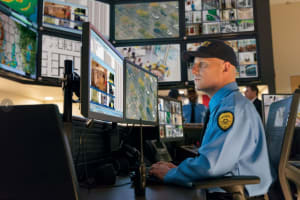A Guide to Commercial Building Access Control & Security Systems
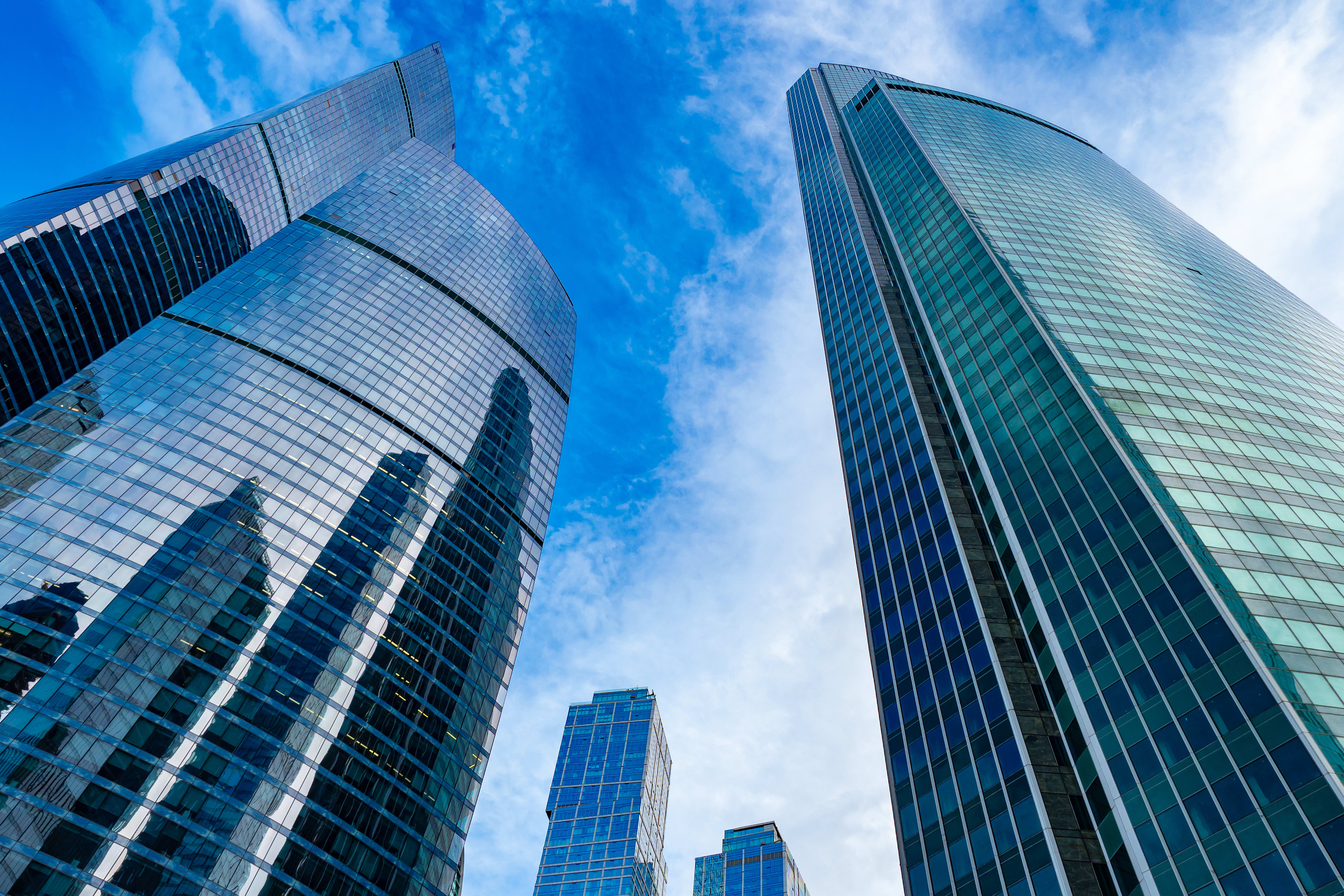
Commercial buildings provide a unique security challenge for access control, as they want to be inviting and accessible to tenants and visitors, while also securing the facility from undesired individuals and situations.
In this blog post, we will provide an overview of commercial building access control systems. We will then discuss common features and types of access control systems, as well as how to implement a building security system. Finally, we will highlight the importance of incorporating an access control system for commercial door entry security systems and discuss some of the security issues and challenges faced by businesses today.
Key Takeaways
- What Commercial Building Access Control Is: Commercial building access control systems limit access to specific areas within a building, using technologies such as keycards, biometrics, and mobile credentials to authenticate authorized personnel.
- Security Features: Key components of a commercial building access control system include mobile credentials, video surveillance, intrusion detection systems, and visitor management software. Each of these adds layers of security and enhances user experience.
- Types of Credentials: Commercial buildings use a range of access credentials, such as keycards, mobile access, biometrics, and keyless entry, to ensure secure access while maintaining flexibility and convenience.
- Implementation: A strong implementation strategy involves assessing building needs, selecting appropriate systems, integrating new technologies, and training staff to use the security infrastructure effectively.
- Benefits of Access Control: Commercial building access control systems boost security, improve operational efficiency, enhance tenant safety, and provide real-time monitoring. They also offer flexibility, scalability, and remote management options for businesses.
- Challenges in Building Security: Some common challenges include inadequate staff training, weak physical security, unauthorized access, and adapting to new security protocols, especially in a post-pandemic environment where touchless solutions are necessary.
What is a Commercial Building Access Control System?
Commercial building access control is a system that controls who can enter and access areas within a building. It may involve using turnstiles, cards, PIN codes, or biometrics such as fingerprints or facial recognition. Through the implementation of access control systems in an office building security system, building owners can limit physical access to all or some areas within their facilities, thus providing an additional layer of security for protecting the people within the facility, and the building itself.
Commercial buildings come in many shapes and sizes, including multi-tenant high rises and skyscrapers filled with commercial offices. It aims to secure the base building, which includes the entryways, common areas, utility closets, amenity spaces, and tenant space.
How to Secure a Commercial Building
Securing a commercial building involves implementing several measures to protect against potential threats. These include installing high-quality locks and access controls, using security cameras to monitor activity, implementing regular security audits and training for employees, and utilizing alarm systems and emergency response plans. It is essential to regularly review and update these office building security measures to ensure the safety of occupants and assets within the building.
7 Essential Features of a Commercial Building Access Control System
Robust building security is an important part of an overall access control strategy. When implementing a building security system, there are many features to consider. These include:
1. Building Security & Access Control Systems
Access control systems can include mobile credentials, card readers, turnstiles and biometrics. Touchless access control systems, such as mobile credentials, offer the added benefit of keeping buildings and residents healthier by reducing physical touchpoints, while also offering the convenience of access on one’s mobile device. Mobile credentials can be electronically distributed to both tenants and visitors removing the requirement for an individual to come on-site to receive a physical credential.
If residents lose their physical cards, the building can face a security risk. However, mobile phones offer additional layers of security, as smartphones are often locked by the user, and there is no separate physical item to lose track of, as is the case with physical security cards.
2. Tenant Experience
It's important to provide tenants and visitors with a valuable user experience, especially as more workers return to the office. LenelS2’s mobile credential solution integrates with third-party tenant experience platforms, such as the Cohesion intelligent building platform. This integration allows users to utilize their phone to access their mobile credentials, while also acting as an electronic guidebook for the building, in assisting finding the nearest coffee shop or amenity spaces. Tenant experience can be a key selling point for building owners looking to differentiate their properties in this competitive tenant market.
3. Video Management & Surveillance Cameras
Video management and surveillance cameras provide visibility throughout a facility and can be utilized both live and forensically. Surveillance cameras include video analytics and motion detection for proactively monitoring areas of interest. Video management tools are used to forensically look through video footage to investigate incidents in the building, whether it's a slip and fall, an altercation in the garage, or a vehicle fender bender. Teams can also crowdsource mobile video to supplement security camera footage. All this information can be displayed in a unified security management dashboard, making it easy for teams to monitor access control and video events building-wide in a single application.
4. Intrusion Detection Systems
Intrusion detection systems are used to monitor areas within a building. Hence, they can then be monitored by a central station which can dispatch police or other emergency personnel if alarms occur off hours. Intrusion detection systems provide the ability to monitor alarms throughout a building, and during off hours have those alarms communicated to a central station, which in turn can dispatch emergency personnel as needed.
5. Visitor Management Software
Visitor management is another common feature of building access control systems. Visitor management provides an active dashboard of visitors in your facility at any given time, as well as the ability to run comprehensive reports on visitor activity over a defined period of time. One capability of visitor management systems allows for the issuance of mobile credentials or QR codes to visitors which can be used to gain entry at a turnstile.
6. Elevator Access Control
Elevators may be secured in multiple ways, including traditional methods such as card readers within the cab to unlock floors, or more modern approaches such as destination dispatch, where a tenant or visitor goes to a kiosk to authenticate and is then directed to a specific cab to gain access to a desired floor.
7. Analytics
Physical security systems can also provide valuable analytics to building owners. This data can showcase building utilization by tenants, making it easier for landlords to address staffing and cleaning services across the building.
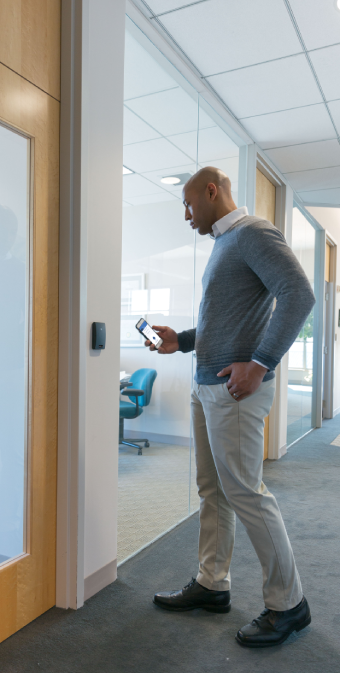
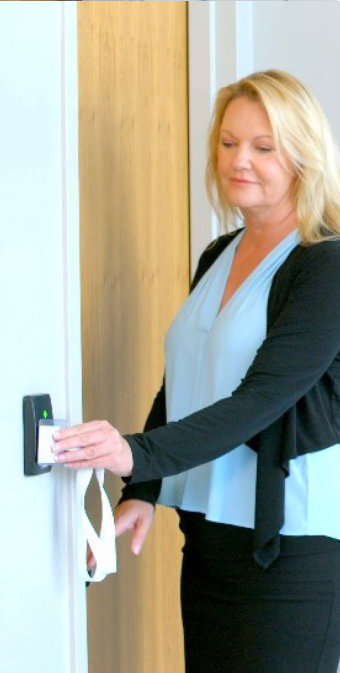
6 Types of Access Control Credentials and Systems for Commercial Buildings
There are several different types of access control credentials available for commercial buildings. These include:
1. Card and Key Fob
These use cards or key fobs programmed with access credentials, allowing them to open doors or access elevators. Typically, these systems use RFID technology that allows the card or fob to wirelessly communicate with a door reader to unlock it. While key fob systems offer convenience, they come with the potential risk of lost or stolen fobs. Therefore, it’s important to regularly manage and update the system to ensure that only authorized individuals have access to specific areas.
2. Keyless Access Control
Keyless access control is a method of granting access to a building or area without using traditional keys. Instead, authentication is performed through various digital means, including biometric access control and mobile access control.
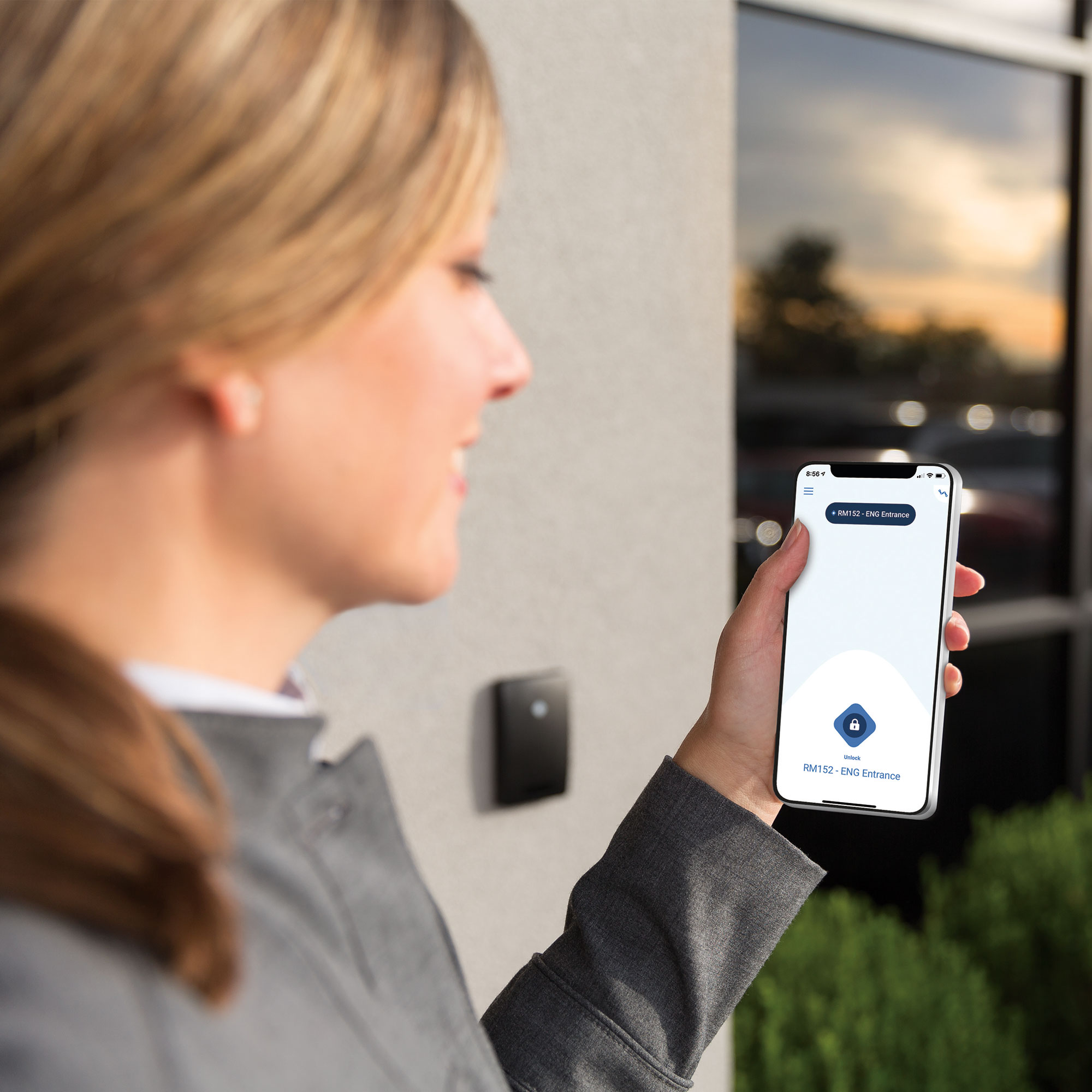
3. Biometric Access Control
These systems use biometrics such as fingerprints or facial recognition to authenticate users’ identities and grant them access. This higher level of security eliminates the need for physical credentials altogether, providing an added layer of security that is difficult to replicate or bypass.4. Mobile Access Control
Mobile credentials provides a touchless access control experience, keeping tenants healthy. Additionally, it offers an extra level of security over keycards.
5. Cloud-Based Access Control Systems
Using any internet-connected device, cloud-based access control systems allow organizations to remotely manage and monitor their building security from anywhere. Unlike traditional on-premise solutions, cloud-based systems store data online, reduce the need for on-site hardware, and require less server maintenance. These systems offer scalability, flexibility, and remote access which makes them ideal for businesses that operate across multiple locations or are constantly expanding.
6. Commercial Video Intercom Systems
Commercial video intercom systems combine access control with real-time video communication. These systems are commonly installed at entrances to allow building staff or tenants to visually verify or identify themselves before entering. Additionally, video intercoms can be integrated with access control systems, enabling tenants to open doors remotely via mobile apps, even if they are not physically present in the building.
How to Implement a Commercial Building Access Control System
The first step in implementing a building security system is to assess your building’s needs (threats, location). This can include evaluating the size and layout of the building, as well as any existing security features. Once you have identified your potential threats and security requirements, it’s crucial to develop an implementation plan. This should include selecting the appropriate access control system, training staff on how to use the system, and regularly testing the system for vulnerabilities. Consider the following when implementing a system:
Integration Capabilities
Most commercial buildings create their foundational building security with an access control solution. They may then add additional measures such as video surveillance or visitor management, but they need to integrate with the access control solution. Since buildings have typically already invested in solutions such as new elevator control, it’s important to find a partner who can seamlessly integrate with those existing technologies.
Work with Trusted Experts
At present, there are very few regulatory requirements for the deployment of access control, which means trusted experts in the field are very valuable for assisting in design and technology selection. As security is more of an art, it helps to hire artists. Although there are some relevant codes and related compliance requirements, security should be a tailored solution for the individual property to help your team meet the specific needs of your building, depending on size, location and tenant population.
An Easy-to-use System
One important consideration with any such large-scale system is the experience of your security team. While your building security system must meet the primary goal of securing the building and assets within it, it should also be easy to use and navigate. Ensure you have a powerful and user-friendly system.
The Tenant Experience
Access control products should be easy for tenants as well. Security solutions such as mobile credentials provide a touchless experience, making it easy for tenants to enter the building, and improving the overall tenant experience and customer satisfaction.
Why Commercial Building Access Control Systems are Important
Building access control systems are important for a variety of reasons, including the following:
Efficiency
Adequate access control systems in buildings enable desired individuals access to select areas within the building, while also providing the commercial building owner valuable information about building activity and utilization. While most importantly keeping the building safe and secure so business can proceed unfettered.
Security
Access control systems help ensure the security of a building or facility by controlling who has access. This prevents unauthorized physical access and keeps the building and its occupants safe.
Accountability
Access control systems keep track of who enters and exits a building or room, providing accountability for any incidents or breaches that may occur.
Customization
Some modern systems allow users to collect and analyze reader usage data and put it towards trending information. The raw data allows building managers to learn about occupancy and utilization, and therefore offers the correct services at the time. It may also help predict future needs, such as determining when tenants may be considering downsizing their office space.
Benefits of Commercial Access Control Systems for Buildings & Offices
- Boosted Security: Commercial building access control systems provide an extra layer of security and only allow authorized and authenticated personnel into the building. This ensures that sensitive information is kept confidential and prevents a business from being compromised or tampered with.
- Greater Efficiency: Automated access control management speeds up entry for authorized personnel and reduces the need for manual monitoring. This is important for reducing bottlenecks at peak business hours when there is a heavy flow of personnel that needs to gain entry to secured access points.
- Real-Time Monitoring: Commercial door access control systems help minimize breaches by identifying suspicious behavior with real-time visibility.
- Enhanced Safety: Commercial access control systems can also deter theft or vandalism which can keep buildings and employees safe. In some cases, it may be enough to deter crime when property management invests heavily in their security posture.
- Flexibility: Managing access can be an overwhelming task, especially for larger organizations. From employees who change roles and need higher levels of security to staff who have left the organization and need their access terminated. Having a capable access control system can help streamline operations for organizations that have constant changes.
- Remote Access: Many commercial access control systems will offer cloud-connected features that let you grant access from another location. This is helpful for unlocking doors to overnight couriers or enabling you to grant access to a person in a different location.
Commercial Building Access Control Security Issues and Challenges
The security of any commercial building must be robust enough to protect its occupants from physical threats and other forms of harm such as theft or invasion of privacy. Unfortunately, there are a number of issues and challenges that buildings face when it comes to security. These include:
- Unauthorized access due to weak access control measures
- Poorly trained staff on how to use the system
- Lack of emergency protocols in case of a breach
- Weak surveillance camera systems or lack thereof
- Poor physical security, such as weak locks or doors
- Numerous entrants / large number of people each day, including tenants, visitors, delivery personnel and contractors
- Potential for a critical situation that requires an entire building lockdown
Additional challenges come in the wake of the COVID-19 pandemic, including getting people back into offices and providing touchless access experiences to minimize the spread of germs. In general, these issues can all be addressed with a proper security and access control solution designed to integrate with your existing building features and technology.
The Future of Access Control Systems in Commercial Buildings
The evolution of access control systems in commercial buildings is closely tied to technological advancements. As businesses look for more efficient, secure, and cost-effective solutions, future trends will likely include:
- Cloud-Based Solutions: The shift towards cloud-based access control systems offers scalable and remote management capabilities that enable building managers to monitor and control access from anywhere.
- Touchless and Biometric Solutions: Increased adoption of touchless solutions like facial recognition and mobile access will become more prevalent because they offer a seamless and hygienic experience for tenants and visitors.
How LenelS2 Can Help Boost Your Commercial Building Access Control
LenelS2 has over 30 years of experience in the building access control space, including with large commercial real estate owners’ clients. LenelS2 is part of Carrier, the leading global provider of healthy, safe, sustainable, and intelligent building and cold chain solutions, uniquely positioning LenelS2 as we focus on solving building challenges every single day. We provide comprehensive access control solutions for commercial buildings that are easy to use, secure, and reliable. Our team has extensive expertise and is constantly innovating to meet the needs faced by our clients across a wide variety of industries. Whether you are looking for an on-premise or cloud-based access control solution, our team of experts can help you.
Not only do we offer access control and video on a single dashboard for a seamless experience, but LenelS2 products are designed to function with each other as well as a whole spectrum of third-party products and systems. We are capable of both retrofitting modern solutions into your existing facility or starting fresh with brand-new buildings or full gut renovation.
If you want a strong user experience and robust modern technology to keep your buildings healthy, consider LenelS2. Request a free demo today to learn more, and let our team provide the expert security system support you need to ensure your facilities are safe and secure.


